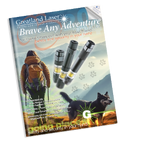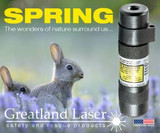Alaskan Flyfishing Rivers and Tips
Alaskan rivers can make for an unforgettable fly fishing vacation. Here's what you need to know about planning a fly fishing trip in Alaska.
When to Fly Fish in Alaska
May through September is peak fishing season in Alaska. During those months, you'll find five different types of salmon, Arctic Grayling, rainbow trout, Arctic char, Northern pike, and more.
You'll need an Alaska fishing license for your trip. You can purchase one online through the Alaska Department of Fish & Game, or pick it up once you land in Alaska. Department stores, wildlife outfitters, and even local supermarkets sell them.
Where to Fly Fish in Alaska
There are so many great fishing rivers in Alaska. If it's your first fly fishing trip in the state, consider heading to one or more of these popular spots:
- Lower Ship Creek - Located right in Anchorage, the Ship Creek is renowned for king salmon. It's a can't miss on your Alaska fishing trip.
- Willow Creek - If you're hoping to catch a little bit of everything, Willow Creek is a great spot. You'll find salmon, rainbow trout, Arctic Grayling and more - just 60 miles from Anchorage.
- Kenai-Moose River Confluence - Where the Kenai and Moose Rivers meet, there's excellent fishing. The slow-moving Moose River is a great place to practice casting and wading, whereas the Kenai is a fast-paced Alaska fisherman's favorite. You'll find sockeye, pink salmon, silver salmon, king salmon, rainbow trout, and Dolly Varden here.
- Campbell Creek - Near Anchorage's Far North Bicentennial Park, you'll find this popular fishing access spot. Expect to catch rainbow trout, silver salmon and Dolly Varden here.
- Deep Creek - Closer to the coast, near Homer, Deep Creek offers steelheads and king salmon from May through July.
Fly Fishing Safety
The largest risk with fly fishing is wading. One wrong movement on a slippery rock and you could seriously harm yourself. Safe wading starts with the right footwear. Felt-soled shoes help you find your footing in rocky rivers, while studs or cleats give you additional grip. Walk slowly and with the stream. Going against the stream or walking quickly makes you more likely to fall.
Whenever you're fishing in rivers, you risk encountering bears. Protect yourself by talking or singing when walking to your fishing spot and by carrying mace or pepper spray.
Hypothermia is also a risk, as Alaska waters are chilly. Dress in layers and wear waders to keep the cold water from making contact with your body. Hypothermia can happen at any time of year in Alaska. Symptoms include fatigue, confusion, shivering, and slurred speech. Since hypothermia can be fatal, it's essential to warm up quickly.
To stay safe when fly fishing in Alaska, carry a rescue laser. These devices can be used to signal overhead aircraft, rescue boats, or other fishers who can summon help, whether you develop hypothermia, have a run-in with a bear, or experience another type of emergency. Shop rescue lasers now.
Looking for more tips and expert advice? Check out www.perfectcaptain.com!
Blog Posts
-
Brave Any Adventure Newsletter 2024 Q2
Click to read our second quarter 2024 Brave Any Adventurenewsletter! …16th Apr 2024 -
Natural Wisdom: How Outdoor Experiences Can Fuel Entrepreneurial Success
Many entrepreneurs find themselves caught in the hustle and bustle of their daily lives, neglecting …12th Apr 2024 -
Spring is in the Air!
1st Apr 2024




